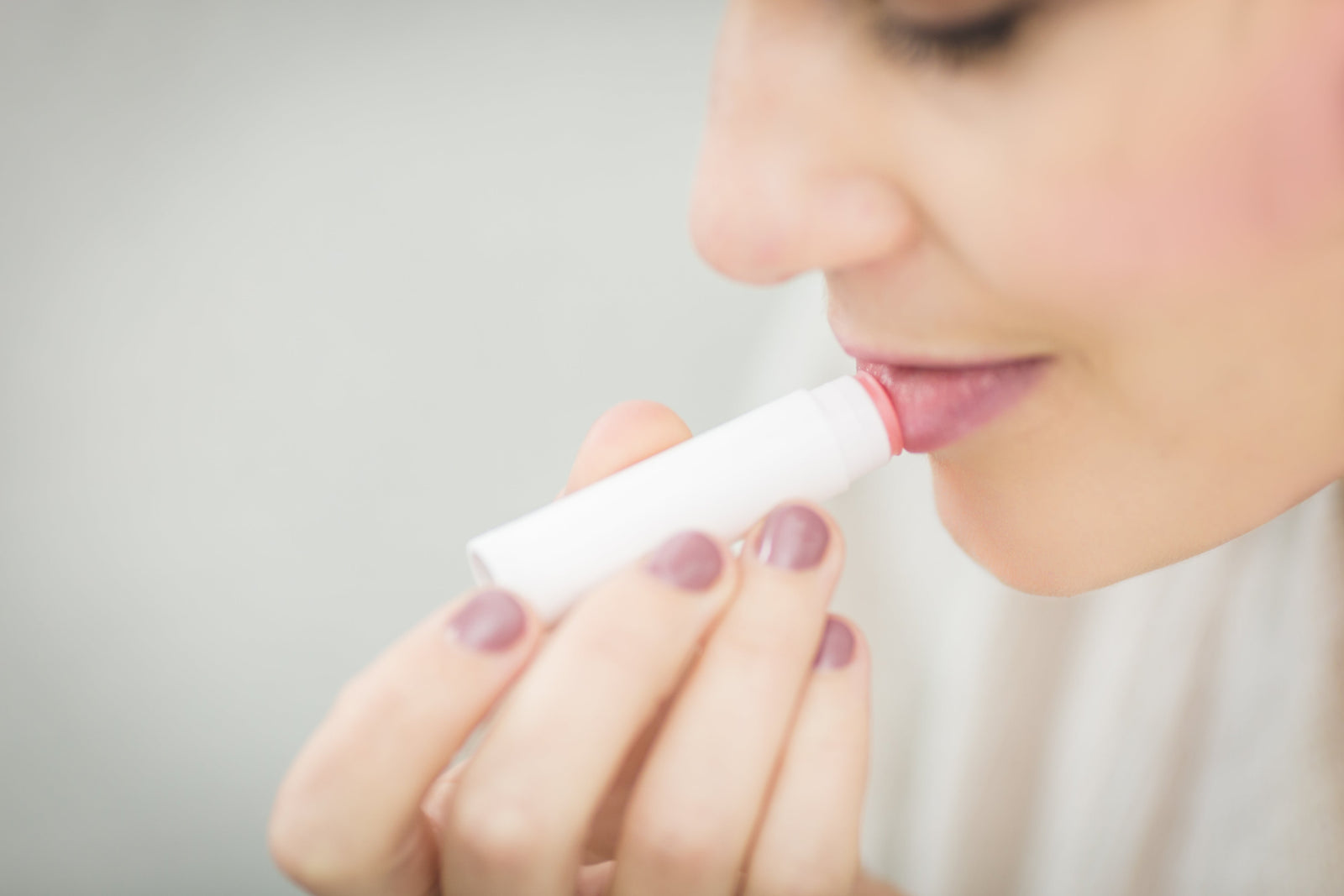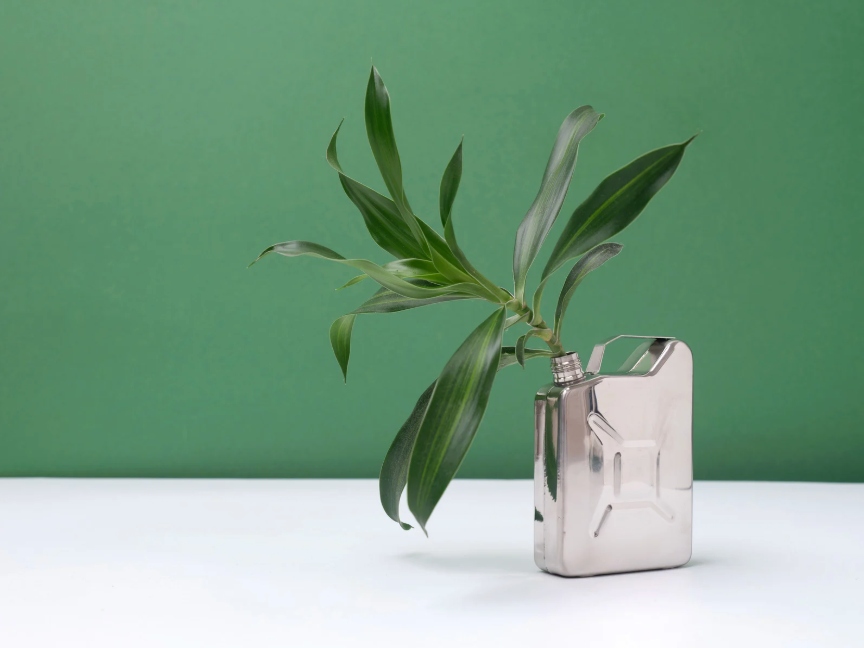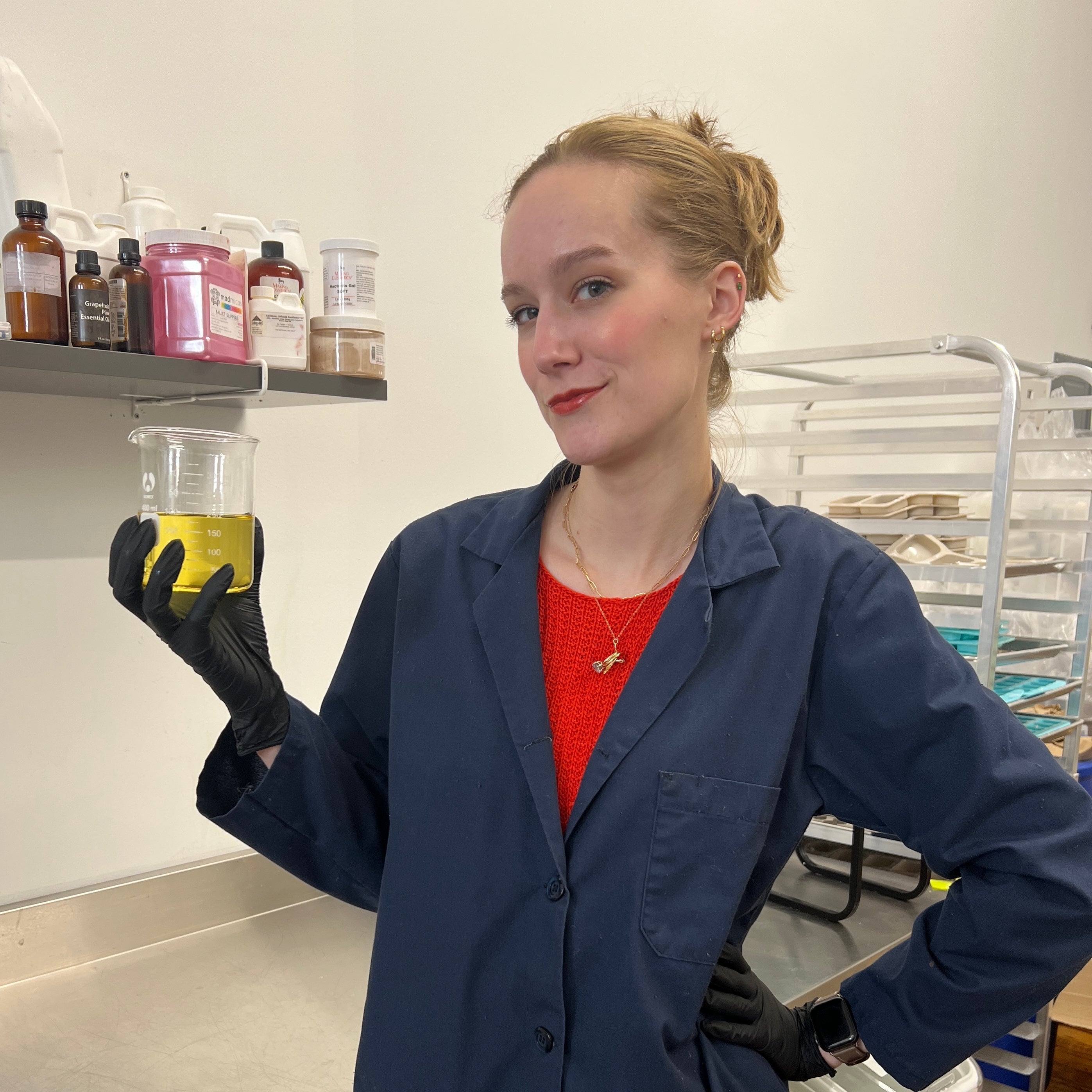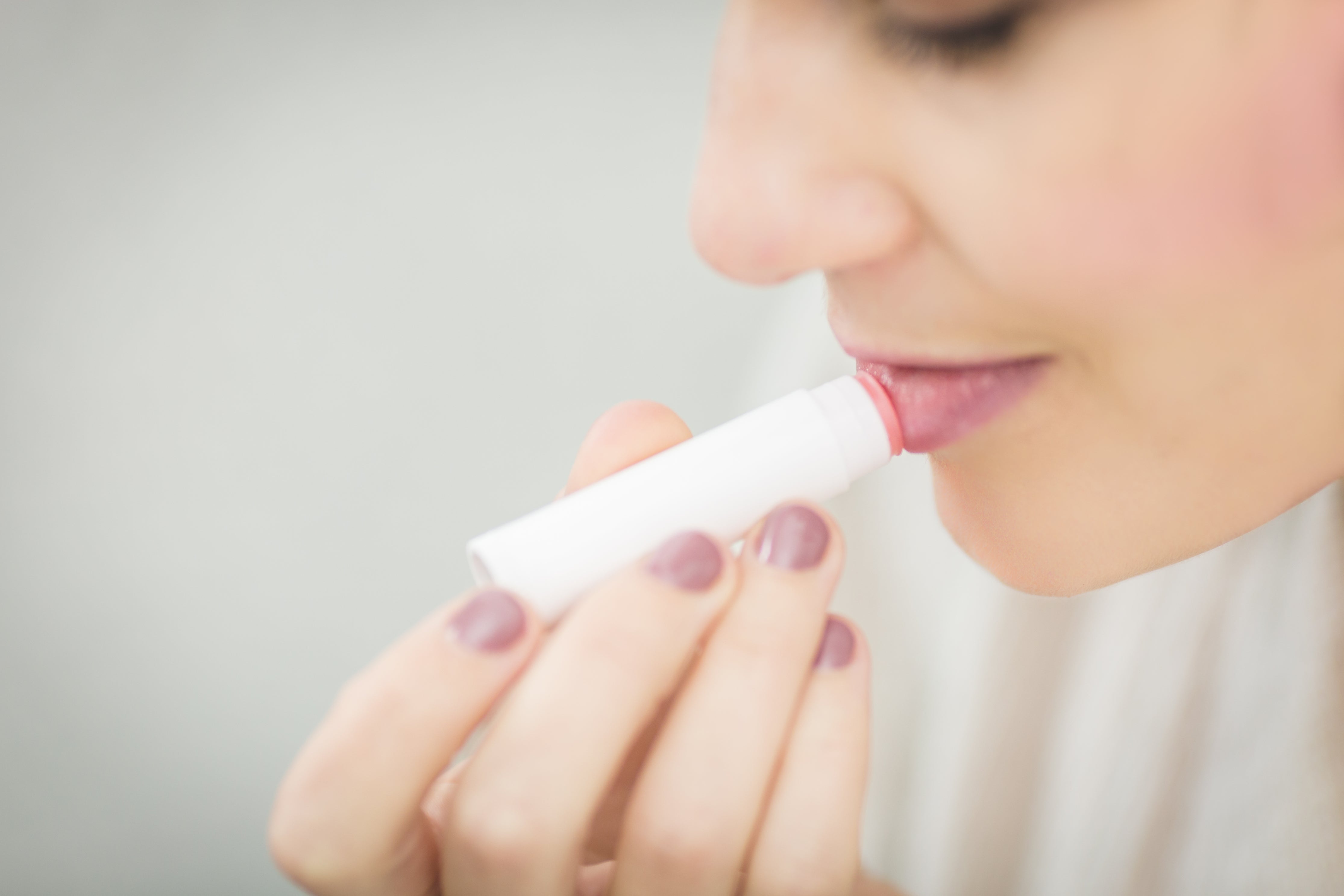How Microplastics In Beauty Products Affect Body & Planet

If you wear lipstick, you’re eating it. It’s gross, sorry! But yes, when lipstick “fades,” it’s going right into our mouths.
And so is every ingredient in it… including microplastics from the packaging and formula.
Yes, we know you’re not chewing on the plastic package!
But microplastics leach from beauty packaging into the product itself, just like they do with food packaging and any other plastic-packaged product that eventually washes out into waterways or gets tossed back to the environment in a landfill.
And that’s contributing to the stash of microplastics in your body and the planet.
So what specifically are microplastics (are they different from microbeads?), and why does it matter if they’re in our bodies? If they’re smaller, does that make them better or worse for the environment?
This is why we made this breakdown for you, including a plastic-swap guide for your most common skincare and beauty needs.
🟣 Just to start, what are microplastics specifically?
Microplastics are synthetic particles ranging from 1 micrometer to 5 millimeters in size. They can include microbeads as well as the microscopic pieces of broken-down plastics that make up beauty and personal care packaging, tools and personal items we use, and fabrics we wear.
They’re basically everywhere now, thanks to decades of plastic production.
Microbeads are a type of intentionally produced microplastics– you might remember exfoliating scrubs or cleansers packed with little plastic beads that washed right down the drain into our water supply? Those are largely gone now from wash-off products, in favor of chemical and/or safer physical exfoliants(like the walnut shells in our Walnut Body Polish).
🟡 Right, I thought we banned microbeads from cosmetics?
That’s true, we did, via the Microbead-Free Waters Act in 2015. You should know that environmental activism campaigns helped raise consumer awareness about the microbead issue, and it was consumer pressure that helped drive the law’s creation and passing.
However, there are lots of loopholes in that law– and it doesn’t apply to glitters, or lotions that don’t wash off, or other household items for example, so it’s far from a perfect solution. BUT. Do not forget that every single change helps.
🔵 Why are microplastics bad for humans and the environment?
Microplastics are very difficult to filter out of our water because they’re so minuscule, so they flow into every part of our environment with ease: the waterways, the ground, and the bodies of humans and animals.
You also won’t be surprised to hear they don’t biodegrade, because even though they’re so tiny, microplastics are still plastic.
Obviously, large plastic litter remains an issue, filling landfills and natural areas, and helping create the infamous ocean garbage patches– but microplastics sneak in and stay in: our drinking water, our blood, and our organs.
The full impact that microplastics might be having on us remains to be seen– it’s new that we’re so aware of their presence inside of us. But the substances they release into us include known endocrine disruptors, which can affect our hormones; carcinogens, which cause cancer; and others which can cause organ damage, cell damage, and inflammatory issues within our immune systems.
There’s some increasing concern as well that microplastics may bioaccumulate, meaning just hang out in our bodies and continue to collect there, rather than cycling out with regular body waste elimination processes. That could potentially clog or impair organs and body systems, too.
Some recent research even shows that we may have about a plastic spoon’s worth of microplastics in our brains by now.
And it’s not just through ingesting lip products that we take in microplastics– our skin absorbs them, and we breathe them through the air, too.
🔴 How common are microplastics in beauty products?
Microplastics are extremely common in beauty products, including both cosmetics and skincare. Studies have revealed that between 79-90% of major-brand cosmetic products contain microplastics.
So, if your product comes in a plastic container, you can bet that even if microplastics didn’t come in the formula, they’ve most likely leached into the product you’re using.
🟣 So plastic cosmetic packaging sheds microplastics right into the products?
Basically, plastic degrades under common conditions. For example, when a plastic container is exposed to heat or corrosives(including exfoliating product formulas), or even just over time, it’ll begin to break down slightly and infuse the product with plastic.
But more than that, microplastics are often used in the formulas themselves…
🟠 Why are microplastics intentionally added to skincare and beauty formulas?
They’ll show up as stabilizers, for texture, and for desirable performance— for example, lip glosses that look more shiny or “plump,” foundations that set or dry in certain ways, or waterproof mascara(this is why none of our mascaras are waterproof; you need waterproofing agents with microplastics to do it).
They also make for inexpensive filler, if something is needed to bulk up a product.
There are microplastics for all of these reasons in lotions, creams, deodorants, shaving cream, and even face masks.
And microplastics provide the shimmer in a lot of eyeshadows and highlighters.
They’re also, of course, the main component of body glitter, which is usually made of tiny, shiny plastic bits that just rub right onto your skin. (But if you love body glitter, we’ve got a safe, plastic-free one in the swap guide below for you).
🟡 How can I spot microplastics in the ingredient lists for my beauty products?
One way is to check for any of the following ingredients:
-
polyethylene (PE)
-
polyethylene terephthalate (PET)
-
polymethyl methacrylate (PMMA)
-
polypropylene (PP)
-
nylon (PA)
You can also avoid personal care + beauty item microplastics by shopping products labeled “plastic-free,” and making sure the packaging is sustainable, aka made of glass, bamboo, paper, metal, etc.
🔵 I can’t believe I’ve been absorbing microplastics this whole time.
I know. We want you to know, so you can look for formulas and packaging options that are safer for humans.
But don’t be too scared– this is just about awareness, and making choices! So many things around us turn out to be healthier or less healthy than we thought at the time, and all we can do is keep informed, stick to science, and use common sense, too.
It’s not possible in this world to avoid all exposures to plastic, and it’s totally okay to use it when you need to. We can’t be perfect and there’s no point in burning ourselves out trying to be.
We’re just pretty consistently seeing overwhelming evidence over decades that plastics and fossil fuel usage are unhealthy for the earth and for humans, so we’re confident in suggesting you avoid them *when* possible.
⚪️ It’s crazy that tiny plastic containers can have such an impact on our lives.
So true. But it’s the sheer volume of little tubes, tubs, compacts, and other little beauty containers produced worldwide that makes the difference. And even more importantly, those containers are ALL single-use. We’ve got some more info in our blog on the impact of single-use plastic beauty packaging on the environment, too!
And with that, please take advantage of our super easy plastic-swap guide:
Plastic-Fighting Beauty Swap Guide
Body scrubs/exfoliators:

Walnut Body Polish. You’re getting fresh, soft skin from upcycled walnut shells!
Body glitter:

100% Biodegradable, plastic-free body glitter! It is real! It’s seasonal, though, so check the listing to see if we have it in stock :)
Lipstick:

Tinted lip balm! Zero-waste, zero-plastic tubes AND formulas.
Chapstick/lip balm:

The Balm is zero-waste and zero-plastic too, and hydrating for everyday use :)
Zero Waste Mascara:

Zero Waste Mascara is our refillable favorite, with a plastic-free glass vial and the same formula as our other beloved refillable fave The Mascara, which also comes in glass and has 85% less plastic than traditional packaging. Learn more about which mascara is right for you on our blog here.
And, obviously, since the point of our whole store is to eliminate fossil fuels and waste, you’ll have a super easy time finding any plastic-fighting beauty and skincare product you want from Zerra.
Come and build your sustainable beauty bag.
And ask us any questions you like at contact@zerraco.com! 😘








